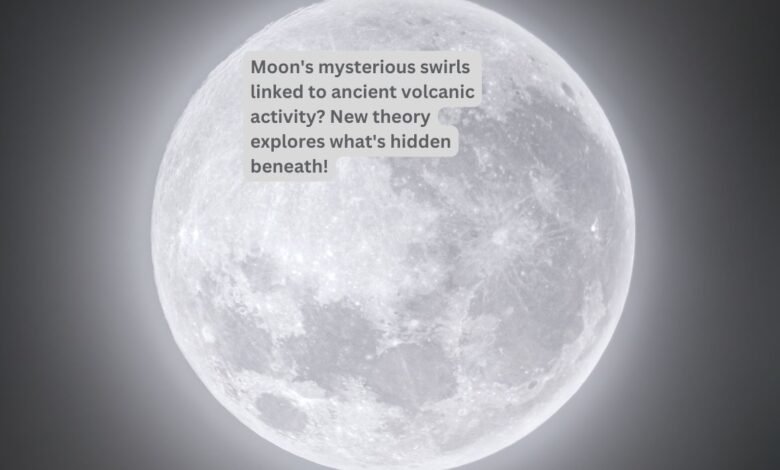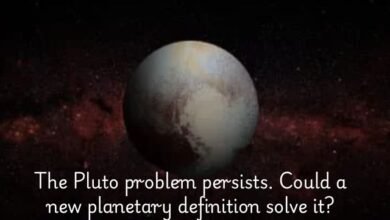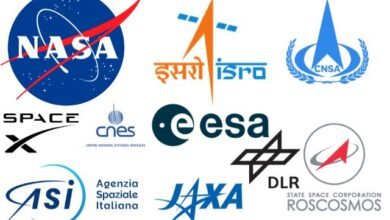Lunar Swirl Secrets: Hidden Moon Feature Explained by Volcanic Past?
Lunar Swirl Secrets: Volcanic past may explain hidden features on the Moon, revealing new insights into its history.

Lunar swirls are intriguing, bright patches on the Moon’s surface that have captivated the curiosity of astronomers since their discovery in the 1600s. These enigmatic features, visible through telescopes, stand in stark contrast to the darker lunar terrain, creating a striking visual phenomenon. Although they have been observed for centuries, the precise mechanisms behind their formation remain a subject of scientific debate and investigation.
One of the most well-known examples of these lunar swirls is the Reiner Gamma swirl, located on the Moon’s near side. This swirl, along with others scattered across the lunar surface, exhibits a high albedo, indicating that they reflect more sunlight than the surrounding areas. The peculiar patterns and bright appearance of lunar swirls have led scientists to speculate on various theories, ranging from magnetic anomalies to interactions with the solar wind.
The mysterious nature of lunar swirls has prompted extensive research, as understanding these features could provide valuable insights into the Moon’s geological history and the broader processes at play on its surface. As we delve deeper into the study of lunar swirls, we uncover more about the complex relationship between the Moon and its environment, shedding light on the broader mysteries of our celestial neighbor.
Now, we will explore the new scientific theories that aim to unravel the hidden mystery behind these fascinating lunar features. From examining their unique characteristics to investigating the latest hypotheses, we hope to provide a comprehensive overview of the current understanding and ongoing research into lunar swirls.
The Moon’s Magnetic Field and Solar Winds
The Moon, unlike Earth, does not possess a global magnetic field. This absence of a protective magnetic shield exposes its surface directly to the relentless bombardment of the Sun’s charged particles, known as solar winds. On Earth, our magnetic field deflects these solar winds, safeguarding the surface from their potentially harmful effects. However, the Moon’s lack of such protection results in a continuous interaction between its surface and these high-energy particles.
Over time, solar winds darken the lunar surface through a process called space weathering. This phenomenon occurs as the charged particles from the Sun interact with the Moon’s regolith—the layer of loose, fragmented material covering solid rock. These interactions cause chemical reactions that progressively alter the composition and appearance of the lunar surface, leading to a darker, more mature regolith. The constant exposure to solar winds also contributes to the formation of nanophase iron particles, which play a significant role in the optical properties of the lunar soil.
Interestingly, despite the Moon’s lack of a global magnetic field, certain regions exhibit localized magnetic anomalies. These mini magnetic fields create protective pockets on the lunar surface, shielding them from the full impact of solar winds. As a result, the regions within these pockets experience reduced space weathering, preserving their original lighter coloration. This stark contrast between the protected and unprotected areas gives rise to the fascinating lunar swirls observed on the Moon’s surface.
These lunar swirls are characterized by their sinuous, bright markings that meander across the darker lunar plains. The precise mechanisms behind their formation remain a topic of scientific intrigue, but the presence of mini magnetic fields provides a compelling explanation. By deflecting solar winds, these localized fields prevent the chemical alterations that typically darken the lunar regolith, maintaining the brighter appearance of the swirls. This interplay between magnetic anomalies and solar winds underscores the intricate and dynamic nature of the Moon’s surface environment.
Existing Theories on Lunar Swirl Formation
Over the years, scientists have proposed several theories to explain the enigmatic lunar swirls. One of the prevailing hypotheses suggests that these formations result from micrometeorite impacts. According to this theory, micrometeorites constantly bombard the Moon’s surface, kicking up charged dust particles. These particles interact with the Moon’s magnetic fields, creating localized magnetic anomalies. This interaction is believed to reflect solar winds, leading to the distinct, bright patterns observed in lunar swirls.
While the micrometeorite impact theory offers a compelling explanation, it is not without its limitations. One of the primary inconsistencies lies in the correlation between magnetic fields and lunar swirls. Although some lunar swirls are indeed associated with magnetic anomalies, not all magnetic fields on the Moon have corresponding swirls. This discrepancy challenges the notion that micrometeorite impacts alone can account for the formation of these features.
Additionally, the micrometeorite hypothesis does not fully explain the varying brightness of lunar swirls. The reflective properties of these formations suggest a complex interaction between the Moon’s surface and external forces, which may involve more than just charged dust particles and magnetic fields. Furthermore, the longevity of lunar swirls raises questions about the stability of the magnetic fields and the persistence of the charged dust particles over extended periods.
Other theories have been proposed to address these gaps, including the possibility of volcanic activity or interactions with the Moon’s exosphere. However, these explanations also face challenges in providing a comprehensive understanding of the lunar swirl phenomenon. As a result, the true origin of lunar swirls remains an open question, with ongoing research striving to unravel this celestial mystery.
New Study by Stanford and WUSL Scientists
In a recent collaborative study, researchers from Stanford University and Washington University in St. Louis (WUSL) have presented a groundbreaking theory that challenges the prevailing micrometeorite hypothesis regarding the formation of lunar swirls. These enigmatic swirls have long puzzled scientists, primarily due to their unique albedo patterns and associated magnetic anomalies. The Stanford-WUSL team posits that the origins of these features may lie beneath the Moon’s surface, rather than being the result of external impacts.
The researchers argue that the magnetic anomalies correlated with lunar swirls could be the result of subsurface forces rather than surface phenomena. By conducting detailed geological and magnetic field analyses, they have identified variations in the Moon’s crust that suggest the presence of ancient magma activity. This underground activity could have created localized magnetic fields, which in turn influenced the surface material, leading to the formation of the mysterious swirls.
Their findings indicate that these subsurface forces might have caused the selective protection and alteration of regolith, the layer of loose, fragmented material covering the lunar bedrock. The magnetic fields generated by ancient magma flows or the crystallization processes could have shielded certain areas from solar wind exposure, resulting in the contrasting bright and dark patterns characteristic of lunar swirls.
Furthermore, the study emphasizes that this theory aligns with the distribution and orientation of the swirls, which appear to follow the underlying magnetic anomalies rather than random impact patterns. By utilizing advanced computer simulations and re-examining lunar samples, the researchers have provided compelling evidence that internal lunar processes played a significant role in shaping these enigmatic features.
This novel perspective not only deepens our understanding of lunar geology but also opens new avenues for exploring the Moon’s magnetic properties. It underscores the importance of considering internal geological processes when studying extraterrestrial bodies, potentially influencing future lunar exploration missions.
The Role of Underground Magma
One of the prevailing theories that attempt to explain the Moon’s magnetic anomalies focuses on the role of underground magma. Researchers have long been intrigued by the unusual magnetic fields detected on the lunar surface, particularly in areas devoid of any apparent geological activity. Recent scientific advancements suggest that these anomalies might be attributed to slowly cooling magma beneath the Moon’s crust.
Radar evidence has unveiled compelling clues about the Moon’s volcanic past. This evidence points to the existence of molten rock that once flowed beneath the lunar surface. These underground rivers of magma, now solidified, are believed to contain high concentrations of ilmenite, a titanium-iron oxide mineral. The presence of ilmenite is significant because it is known to be highly magnetic when subjected to cooling in a magnetic field. As the magma cooled slowly over time, it likely aligned with the Moon’s magnetic field, creating the distinct magnetic signatures observed today.
These findings are bolstered by radar data that reveal subsurface structures consistent with volcanic activity. The implications of this discovery are profound, as they provide a window into the Moon’s geological history and the processes that shaped its landscape. Understanding the role of underground magma not only sheds light on the Moon’s magnetic anomalies but also offers insights into the broader mechanisms of planetary formation and evolution.
Moreover, the presence of ilmenite-rich magma deposits could have significant implications for future lunar exploration. Ilmenite is an important resource for potential in-situ resource utilization (ISRU) initiatives, which aim to use local materials for construction and fuel production in space exploration missions. Therefore, these magnetic anomalies not only unravel a scientific mystery but also present practical opportunities for advancing human presence on the Moon.
Experimental Findings on Ilmenite
Recent experimental research has provided groundbreaking insights into the enigmatic lunar swirls, with a focus on the mineral ilmenite. The prime objective of the experiments was to understand how the slow cooling of ilmenite, under specific conditions, can stimulate grains of metallic iron and iron-nickel alloys to generate a potent magnetic field. This investigation is pivotal, as it offers a plausible explanation for the strong magnetic regions associated with the Moon’s mysterious swirls.
The experiments began by replicating the lunar environment, ensuring that the conditions mirrored the Moon’s surface as closely as possible. Researchers exposed ilmenite samples to a range of temperatures and cooling rates, meticulously observing the mineral’s behavior. Under controlled conditions, ilmenite was heated to high temperatures and then allowed to cool very slowly. It was during this slow cooling process that significant transformations were observed.
As the ilmenite cooled, tiny grains of metallic iron and iron-nickel alloys began to form within the mineral. These grains are critical because they possess the capability to produce a magnetic field. The researchers noted that when the cooling rate was sufficiently slow, the resulting magnetic field was notably strong. This phenomenon is attributed to the alignment and interaction of the iron and iron-nickel grains within the ilmenite, which collectively enhance the magnetic properties.
The experimental findings suggest that similar processes could have occurred on the Moon, leading to the formation of the highly magnetized regions detected today. These results lend substantial support to the theory that the Moon’s magnetic anomalies, particularly those associated with lunar swirls, could be a consequence of the slow cooling of ilmenite-rich rocks. The alignment of iron and iron-nickel grains within these rocks could be the key to unlocking the mystery behind the Moon’s magnetic swirls, offering a fascinating glimpse into the lunar surface’s magnetic history.
Future Research and NASA’s Lunar Vertex Mission
As the scientific community delves deeper into the enigma of the Moon’s mysterious swirls, the necessity for further research becomes increasingly evident. These peculiar formations, scattered across the lunar surface, have puzzled scientists for decades. To unravel the intricacies behind these enigmatic patterns, comprehensive studies and data collection are imperative.
One promising endeavor on the horizon is NASA’s upcoming Lunar Vertex mission, slated for a 2025 launch. This mission aims to deploy a highly advanced rover to the Reiner Gamma swirl, one of the most prominent and intriguing lunar swirls. The primary objective of this mission is to drill into the lunar surface at various points within the Reiner Gamma formation. By doing so, scientists hope to gather unprecedented data that could shed light on the formation and evolution of these swirls.
The rover, equipped with cutting-edge scientific instruments, will meticulously analyze the lunar soil and its underlying layers. This analysis is expected to provide critical insights into the composition, magnetic properties, and structural characteristics of the lunar swirls. Additionally, the mission will explore the potential links between these formations and the Moon’s magnetic anomalies, which have long been a subject of speculation and debate.
Furthermore, the Lunar Vertex mission represents a significant step forward in lunar exploration, offering a unique opportunity to directly investigate the Moon’s surface in a manner that has never been done before. The data collected by the rover will be instrumental in validating or refuting existing theories about the origin and nature of lunar swirls. It could also pave the way for new hypotheses and models, ultimately bringing us closer to solving this long-standing mystery.
Lunar Vertex mission is poised to be a landmark scientific expedition, potentially revolutionizing our understanding of the Moon’s mysterious swirls. By combining advanced technology with meticulous research, this mission holds the promise of unlocking the secrets of these enigmatic formations, contributing significantly to our knowledge of lunar geology and the Moon’s history.
- Space Junk: What is it and how does it affect us
- Can meteorite strikes cause quakes on Mars?
- Chang’e-5 mission finds graphene on Moon, shaking up theories about our lunar neighbor’s formation!
Conclusion
The enigma of the Moon’s mysterious swirls has long captivated both scientists and the general public. These unique formations, with their contrasting bright and dark patterns, have puzzled experts for decades. Recent theories propose that these lunar swirls may be linked to underground magma activity, offering a fresh perspective on their origin. This theory suggests that the swirls could be a surface manifestation of ancient volcanic processes, reshaping our understanding of the Moon’s geological history.
Future research is crucial in unraveling this mystery. Missions like NASA’s Lunar Vertex are positioned to play a pivotal role in this quest. By providing high-resolution data and in-situ analysis, these missions can validate or refute the underground magma theory, and potentially uncover new facets of lunar geology. The importance of these investigations extends beyond mere curiosity; understanding lunar swirls can offer insights into the Moon’s magnetic field and its interior structure, which are essential for broader lunar exploration and potential habitation.
Recent scientific theory linking lunar swirls to underground magma represents a significant advancement in lunar science. It underscores the dynamic and complex nature of the Moon, encouraging continued exploration and study. As new missions venture to the lunar surface, we edge closer to unlocking the secrets of these mesmerizing features, ultimately enriching our knowledge of Earth’s closest celestial neighbor.
FAQ: Lunar Swirl Secrets – Unveiling the Moon’s Mysterious Markings
What are lunar swirls?
Lunar swirls are wispy, brightly colored patterns found on the Moon’s surface. They alternate in brightness and can be seen in clusters or as isolated features. Scientists have been puzzled by their origin for decades.
What is the new theory about their formation?
This theory suggests that lunar swirls are linked to the Moon’s volcanic past. The swirls might be caused by the presence of magnetized rock formations beneath the surface. These rocks could have shielded certain areas from the solar wind, affecting how particles interact with the lunar surface and leading to the observed color variations.
Is there any evidence to support this theory?
The theory is based on observations of the swirls’ association with specific magnetic anomalies on the Moon. Researchers believe these anomalies could indicate the presence of magnetized rock formations.
What are the implications of this theory?
If the theory holds true, it would suggest that the Moon’s volcanic activity may have played a more significant role in shaping its surface than previously thought. It could also provide clues about the Moon’s internal composition and magnetic history.
Are there any ongoing efforts to study lunar swirls?
Yes, scientists continue to study lunar swirls using data from spacecraft like the Lunar Reconnaissance Orbiter. Future missions to the Moon may also provide opportunities to directly analyze the composition of these features and further test this theory.



